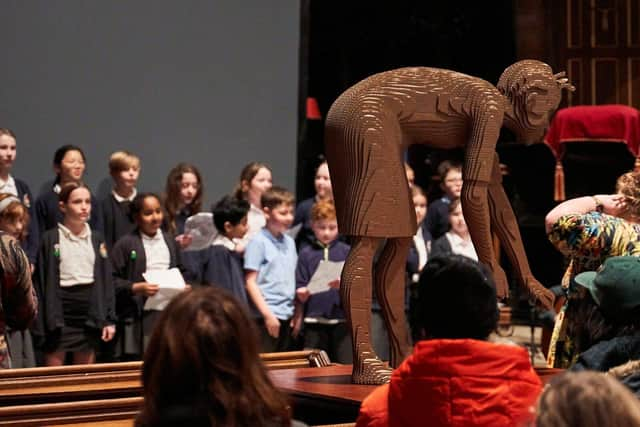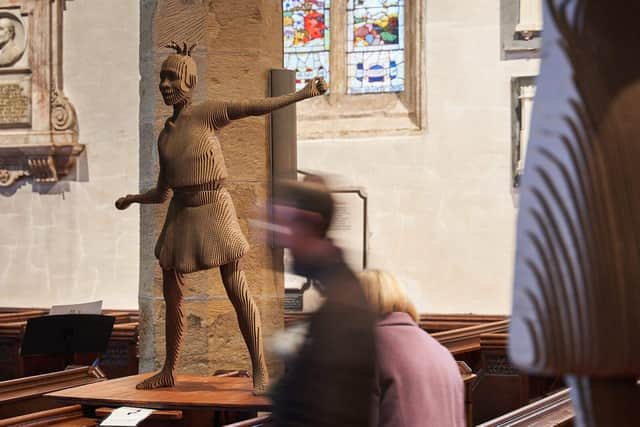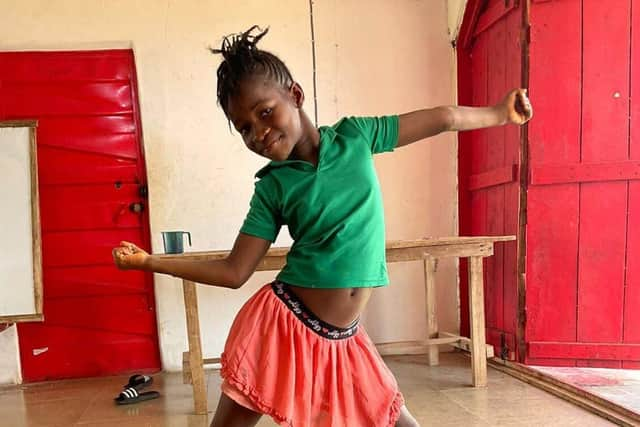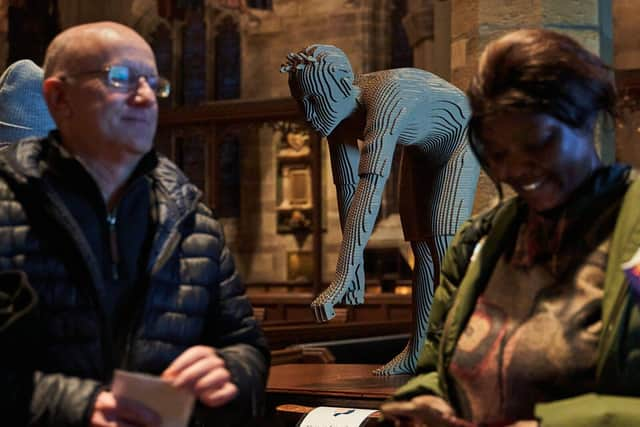Unique life-sized sculptures make their debut at Lancaster church
and live on Freeview channel 276
The Three Sophias, life-sized cardboard sculptures, reflect poses by African schoolgirls inspired by Sophia Fileen who was baptised at the Priory in 1799 where she was recorded as ‘a negro aged 11 years’ of Lancaster.
The sculptures are on display until December 7 before going on tour and returning to the Priory in January.
Advertisement
Hide AdAdvertisement
Hide AdThey are the artistic element of Phase 2 of Lancaster’s Facing the Past project which received £242,979 from The National Lottery Heritage Fund last year.


Facing the Past is an arts and research programme to reflect, reveal and redress omissions in the way Lancaster has commemorated its role as the fourth largest slavery port in the UK.
Sophia’s baptism record was discovered during research for a new booklet which is also part of the project.
Written by historian Melinda Elder, the research has revealed many links between transatlantic slavery, the Priory and St John’s Church.
Advertisement
Hide AdAdvertisement
Hide AdSeveral plaques and gravestones at both churches commemorate merchants and captains involved in the slave trade. The vandalism of one such memorial sparked the first phase of the project in 2020.


Slave traders donated money for the Priory’s brass candelabras and an organ which has since been replaced although its original Gillow case survives.
“We continue to respond to the disruptive act of protest in our churchyard by seeking to disrupt the inside of the church, making space for black history and presence and encouraging dialogue,” said vicar of Lancaster, the Rev Leah Vasey-Saunders.
Although much is known about Lancaster’s slave traders, the opposite is true of the enslaved Africans who were brought to the area.
Advertisement
Hide AdAdvertisement
Hide Ad

Registers for St Mary’s Parish, which includes the Priory and St John’s, feature 76 entries for people of African or mixed African heritage between 1755-1837. These include 58 baptisms, 13 burials and five marriages.
Sophia was one of very few females to appear and also the youngest black person though no more is known about her.
“We want to remember and make visible the 76 black Africans named in our registers and Sophia, whose name means wisdom, is the first step towards this,” Rev Vasey-Saunders added.
As Lancaster Priory already had a partnership with EducAid working in Sierra Leone, the Facing the Past team asked some pupils there to imagine what Sophia’s life might have been like as a young girl with hopes and dreams just like them.
Advertisement
Hide AdAdvertisement
Hide Ad

The Priory linked up with the girls online and Lancaster dance teachers helped them to create poses on which the digitally printed cardboard sculptures are based.
Dallas Road Primary School pupils were among the first to see the sculptures when they performed a song – Lead With Love – based on a poem by a Lancaster Royal Grammar School pupil and sponsored by Lancaster Music Festival.
And a new school poetry competition was announced at the launch in memory of poet Elizabeth Burns whose husband Prof Alan Rice is co-director of the Institute for Black Atlantic Research.
During the past 14 months of the project a digital map of Lancaster focusing on its global connections with the slave trade has also been developed and teachers from local primary schools have received training on using and adapting the trail which many children have already completed.
For more information and to get involved, visit facingthepast.org